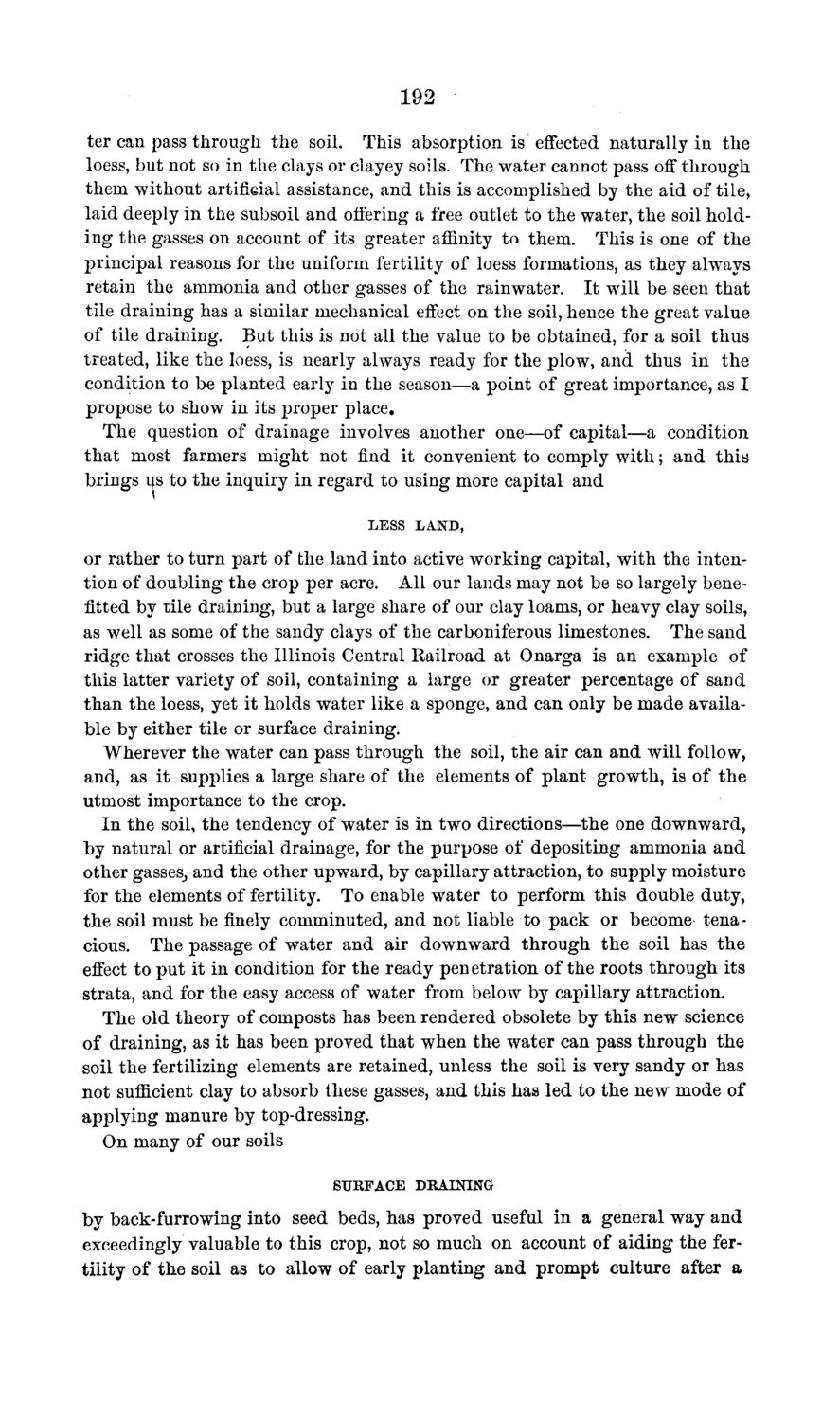| |
| |
Caption: Board of Trustees Minutes - 1869
This is a reduced-resolution page image for fast online browsing.

EXTRACTED TEXT FROM PAGE:
192 ter can pass through the soil. This absorption is' effected naturally in the loess, but not so in the clays or clayey soils. The water cannot pass off through them without artificial assistance, and this is accomplished by the aid of tile, laid deeply in the subsoil and offering a free outlet to the water, the soil holding the gasses on account of its greater affinity to them. This is one of the principal reasons for the uniform fertility of loess formations, as they always retain the ammonia and other gasses of the rainwater. It will be seen that tile draining has a similar mechanical effect on the soil, hence the great value of tile draining. But this is not all the value to be obtained, for a soil thus treated, like the loess, is nearly always ready for the plow, and thus in the condition to be planted early in the season—a point of great importance, as I propose to show in its proper place. The question of drainage involves another one—of capital—a condition that most farmers might not find it convenient to comply with; and this brings us to the inquiry in regard to using more capital and LESS LAND, or rather to turn part of the land into active working capital, with the intention of doubling the crop per acre. All our lands may not be so largely benefitted by tile draining, but a large share of our clay loams, or heavy clay soils, as well as some of the sandy clays of the carboniferous limestones. The sand ridge that crosses the Illinois Central Railroad at Onarga is an example of this latter variety of soil, containing a large or greater percentage of sand than the loess, yet it holds water like a sponge, and can only be made available by either tile or surface draining. Wherever the water can pass through the soil, the air can and will follow, and, as it supplies a large share of the elements of plant growth, is of the utmost importance to the crop. In the soil, the tendency of water is in two directions—the one downward, by natural or artificial drainage, for the purpose of depositing ammonia and other gasses, and the other upward, by capillary attraction, to supply moisture for the elements of fertility. To enable water to perform this double duty, the soil must be finely comminuted, and not liable to pack or become tenacious. The passage of water and air downward through the soil has the effect to put it in condition for the ready penetration of the roots through its strata, and for the easy access of water from below by capillary attraction. The old theory of composts has been rendered obsolete by this new science of draining, as it has been proved that when the water can pass through the soil the fertilizing elements are retained, unless the soil is very sandy or has not sufficient clay to absorb these gasses, and this has led to the new mode of applying manure by top-dressing. On many of our soils SURFACE DRAINING by back-furrowing into seed beds, has proved useful in a general way and exceedingly valuable to this crop, not so much on account of aiding the fertility of the soil as to allow of early planting and prompt culture after a
| |